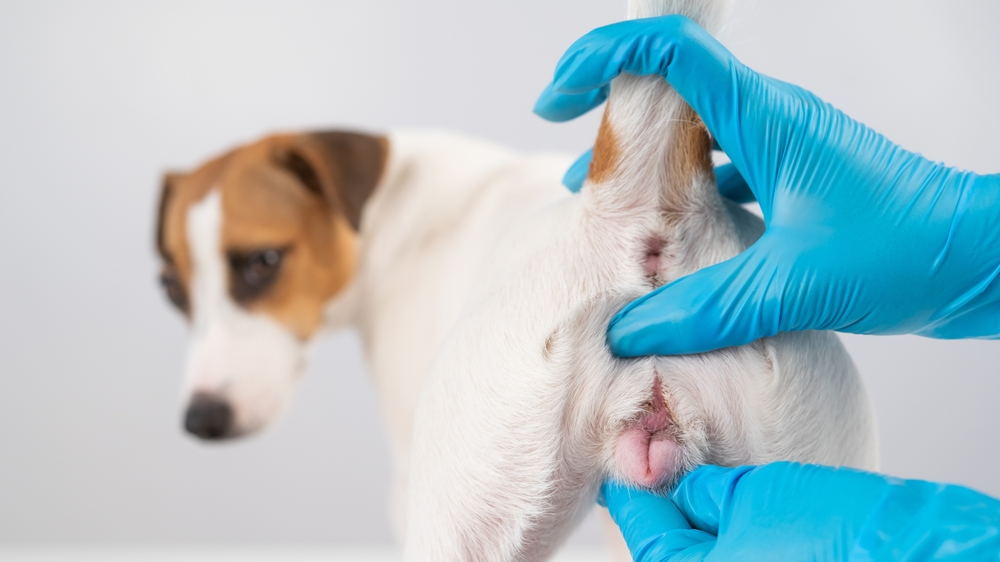Every human woman knows just how uncomfortable and painful periods can be. Leading up to a period, women can experience bloating, cramping, gastrointestinal upset, as well as emotional or behavioral changes.
When a dog enters a heat cycle, is it comparable to what we experience? Is the pain the same? Do they have similar changes in behavior or are things different for our canine companions? While dogs don’t have cramps like humans, it is thought that they feel some level of discomfort during their heat cycle. In this article, we aim to explain what science has determined so far about periods and dogs.


Discomfort During Heat Cycles
Because our dogs can’t tell us how they are feeling, we rely on behaviors like excessive grooming, licking, pacing, and difficulty getting settled to tell us that our dog is uncomfortable during her cycle. Dogs entering a heat cycle, known as estrus, often show signs of discomfort, fever, and irritation, while others appear unaffected by the process.


Do Dogs Have Period Cramps?
Women experience period pain or cramps as the body expels the extra lining of the uterus (womb). This lining builds up each month in preparation for a potential pregnancy, so if none occurs, the lining material is pushed out of the womb in the process known as menstruation.
The canine uterus does not go through this same process because they have a different placental implantation design, so their uterus does not experience the same cramping that human females do.
Do Dogs Experience Pain During Their Cycle?
There is no scientific or veterinary evidence to suggest that dogs experience pain during estrus, but it is likely that they experience some discomfort. Most of the time, a dog might get fidgety, have changes in appetite, stretch more, and lick the affected areas.
Ultimately, since we can’t talk to our dogs in language we can understand, it’s hard to say exactly what a dog is experiencing during her cycle. However, just as every woman is different, every female dog likely experiences heat cycles in different ways.
Some of them might seem purely unaffected by it and continue their day-to-day routine without much of a difference. Others might seem a little more down and out, not really themselves, or might even seem moodier than usual.


What Happens During Heat Cycles?
Dogs have quite a protracted estrus cycle consisting of four stages. Unlike humans, who cycle every month, dogs tend to only have one or two heat cycles per year.
When Heat Cycles Begin
For some dogs, estrus may begin as early as 4 months of age, but 6 months is more common. Many things can influence when females go into their heat cycles, including the breed and genetics.
Small breed dogs tend to have their first estrus cycle at around 5-6 months, while giant breeds may not have their first cycle until they are 18-24 months old.


Stages of the Heat Cycle


As we mentioned, there are 4 stages to the canine estrus cycle:
1. Proestrus: 6-11 days
Estrogen is produced by the ovaries during proestrus, reaching a peak 1-2 days before the next stage (estrus). The increasing Progesterone levels continue to increase for 2-3 weeks after ovulation, regardless of pregnancy status. After reaching peak levels, they remain steady for 1-2 weeks before gradually decreasing over the next 10-30 days until returning to baseline.
Anestrus follows estrus if no mating occurs, or after diestrus (non-pregnant) or after giving birth. Progesterone levels remain low during this period to prepare the uterus for the next estrus cycle.
To prevent heat cycles in females, hormone injections can delay estrus onset, but spaying is the most effective method. Spaying between the first and second season is recommended to reduce risks of mammary cancer and ensure full sexual maturity.
Managing a dog’s cycle involves preparing for bleeding, giving her space, keeping her contained, and understanding the risk of pregnancy. It is important to monitor her closely during this time to prevent unwanted pregnancies. During this period, her ovaries will release eggs for potential fertilization. sentence in a different way:
The cat sat lazily in the sun, purring contentedly. given sentence: “The cat sat lazily in the sun.”
Rewritten sentence: “Basking lazily in the sun was the cat.”

